
Result report of the pilot experiment from 2023
Evaluating the effect of the soil treated with soil adjuvant in the form of concentrated Azorhiz bio-fertilizer (containing non-symbiotic bacteria Azotobacter chroococcum, Azospirillum brasilense and Bacillus megaterium and symbiotic inoculative bacteria Rhizobium japonicum and Rhizobium leguminosarum.) with additive F (containing Trichoderma atroviride mycoparasitic fungi) and evaluating the effect of the plant biostimulant with Azoter L fertilizer (containing Herbaspirillum seropedicae bacteria) in the cultivation technology of soybean crop
* * *
Ing. Tomáš Javor, DiS., Ing. Lenka Beranová, DiS. a kol., AGROEKO Žamberk spol. s r.o.
Jiří Čermák, Farma Čermákovi s.r.o.
Ing. Jiří Suchodol, AZOTER Trading s.r.o.
Characteristics of the experiment: Verification of Azorhiz biofertilizer at a dose of 10 l/ha with an inoculation effect for the root system of soybean plants and supplemented with additive F at a dose of 0.1 l/ha with a phytopathogenic effect was established in a drier area in Lhota pod Přeloučí, located in flat terrain at an altitude of 208 m. The experiment was established by a pilot method of simple long plots with a size of 0.54 ha/per each plot, with the total number of 4 plots including the control untreated variant. Plot number 4 (treated with Azoter L fertilizer with factory-added hydrogel) was smaller and its size was 0.28 ha. The soil on the experimental plot was predominantly classified as light arenic subtype with the soil type consisting of arenosols calcaric cambisols, cambisols, or even fluvisols on light, water non-retention, strongly drying substrates. The pre-crop for the soybean was grain corn with straw left on the plot. The soil after the pre-crop (corn) showed satisfactory content of available phosphorus, good content of available potassium, high content of available calcium and very high content of available magnesium. The value of soil PH was slightly acidic (Table 1).

Tab. 1. Basic agrochemical properties of the soil on the plot before establishing the experiment (May 7, 2023)
Azorhiz biofertilizer contains non-symbiotic diazotrophic bacteria that fixes airborne nitrogen: Azotobacter chroococcum, Azospirillum brasilense. The fertilizer also contains bacteria that are involved in making phosphorus available in the soil: Bacillus megaterium. The product includes symbiotic bacterial inoculants that occur on the roots of soybeans: Rhizobium japonicum and Rhizobium leguminosarum. They fix most of the plants’ nitrogen from air (N2). The fertilizer in spray with additive F contains Trichoderma atroviride – the soil fungus, which reduces the development of spores of Fusarium species (it also reduces Pythium, Rhizoctonia and Botrytis) and strengthens the effect of the fertilizer in hemicelluloses/cellulose conversion contained in post-harvest residues. This additionally makes nutrients available for cultivated crops.
Azorhiz fertilizer was applied with an AMAZONE UX 4200 field sprayer just before the pre-sowing preparation of the soil on 30.04.2023 in a dose of 10 l/ha together with the additive F in a dose of 0.1 l/ha. The dose of the spray was 300 l/ha. The working pressure of the sprayer system did not exceed 2.5 bar for optimal application of biological preparations with vital content. Incorporation of the applied product was carried out immediately with a pre-sowing compactor with a working depth of 4 cm. Before the compactor was used, the nitrogen fertilizer Alzon Neo (stabilized urea, 46% N) was applied in a dose of 50 kg/ha (23 kg N/ha). Next the soil was processed with Horsch seeder that combined soil preparation and fertilization with Triple Superphosphate (TSF) in a dose of 50 kg/ha (min. 24 kg P2O5/ha) to the inter-rows. Before sowing, Kieserit fertilizer was applied to the plot in a dose of 100 kg/ha.
The stands were further treated with extra-root nutrition by applying Lovosoya liquid fertilizer mixed with Borosan Humine fertilizer (boron-ethanolamine + humic substances) in two terms during the growing season. The first application was made when 2-3 leaf layers were formed (12.06.2023) and the second application was made in 5-6 leaf layers (in some plants the application was made already in the first flower-bud) on 21.06.2023. Complex number of macro and micronutrients were applied by extra-root application, which were based on the diagnostic recommendations (Table 2).

Tab. 2. Dose of macro- and micro-nutrients supplied to the soybean plant by extra-root nutrition (application on 12.06.2023 and 21.06.2023)
Sowing of the plot was on 07.05.2023 at a seed rate of 130 kg/ha (row spacing of 16 cm), the seeds were placed in the depth of 3.5 cm. The stand was established with Brunensis (early) soybean variety. Soybean seed inoculation with HiStick Soy preparation (contains spores of nodule bacteria Bradyrhizobium japonicum sp.) was applied by a dry method in a fixed mixing plant just before the sowing date in the manufacturer’s recommended dose (400 g/115 kg of seed). After sowing, the soil was not rolled with Cambridge roller. After sowing, Sencor herbicide with wetting agent was applied to the plot, after crop emergence Corum and Gallant herbicides were applied to the plot.
Azoter L biofertilizer at a dose of 10 l/ha was applied on 17.6.2023. The application was performed on the emerged soybean stand in the developed 3rd – 4th leaf layers on the stem. The application was carried out in a dose of spraying agent (300 l/ha). In variant No. 4, hydrogel (composed of potassium polyacrylate) was added to Azoter L fertilizer in a dose corresponding to 1 kg/ha to verify the extension of the leaf wetness and the penetration time of the fertilizer containing Herbaspirillum seropedicae vital bacterium through the leaf cuticle. The system pressure of the sprayer did not exceed the limit of 2.5 bar during application. In addition to endophytic diazotrophic bacteria, Azoter L fertilizer also contained boron (micronutrient) in a dose of 25 g/ha, potassium in a dose of 26 g/ha and nitrogen in a dose of 91 g/ha (total dose of 469 g/ha).
The aim of the semi- pilot experiment was to verify the effectiveness of soil inoculation with isolated strains of nodule bacteria living on soybean roots, together with the delivery of non-symbiotic bacteria fixing airborne nitrogen (N2) and phytopathogenic fungi for plant protection, and to compare this effect with the standard technology of seed inoculation with nodule bacteria and extra-root application of a special type of endophytic nitrogen – fixing bacteria in plants in the technology applied to the growing of soybean. Before sowing, the soil was fertilized with a starting dose of nitrogen and phosphorus to support the nutrition and growth of the stands in the first half of the growing season, in which the fixing galls of nodule bacteria were just began form on the roots (Table 3).
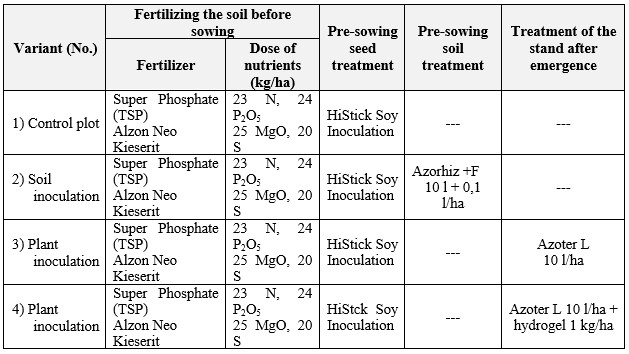
Tab. 3. Design of the pilot experiment to verify the effectiveness of biological fertilizers (variants) fixing the airborne nitrogen into the soil or in the plant tissues (variants of the eperiment)
Results with Azorhiz +F soil inoculation and the effectiveness of Azoter L foliar fertlizer in soybean stands
Using diagnostic methods, the nutritional status of plants during the growing season and the harvest, including yield-generating elements and soybean seed quality was evaluated. At the same time, the evaluation of the basic agrochemical properties of the soil before and after the application of the verified fertilizers was carried out to get a comprehensive assessment of the effect, including the effect for the subsequent crop (usually for winter wheat).
1) The effect of Azorhiz + F bio-fertilizer on the agrochemical properties of the soil
In the soybean stand established after the corn pre-crop, the soil showed a medium supply of available mineral nitrogen (Nmin.) in the amount of 67 kg/ha. The soil was subsequently fertilized with Triple Super Phosphate applied in the inter-rows. The remaining dose of nitrogen was applied earlier, before actual sowing, in the form of Alzon Neo stabilized urea. During the growing season, Nmin supply in soil of 147 kg/ha (good supply) was found on 03. 08. in the stand where the fertilizer was applied by a standard method (control var. 1). The residual supply of Nmin. in the soil during the soybean harvesting by hand was 57 kg/ha in the standard application of fertilizers with nitrogen (and phosphorus) content in the medium supply category. This testified to the very good use of nitrogen by the soybean plant from the soil, in addition to atmospheric N2 fixation, also after the intense mineralization of organic substances (Fig. 1).
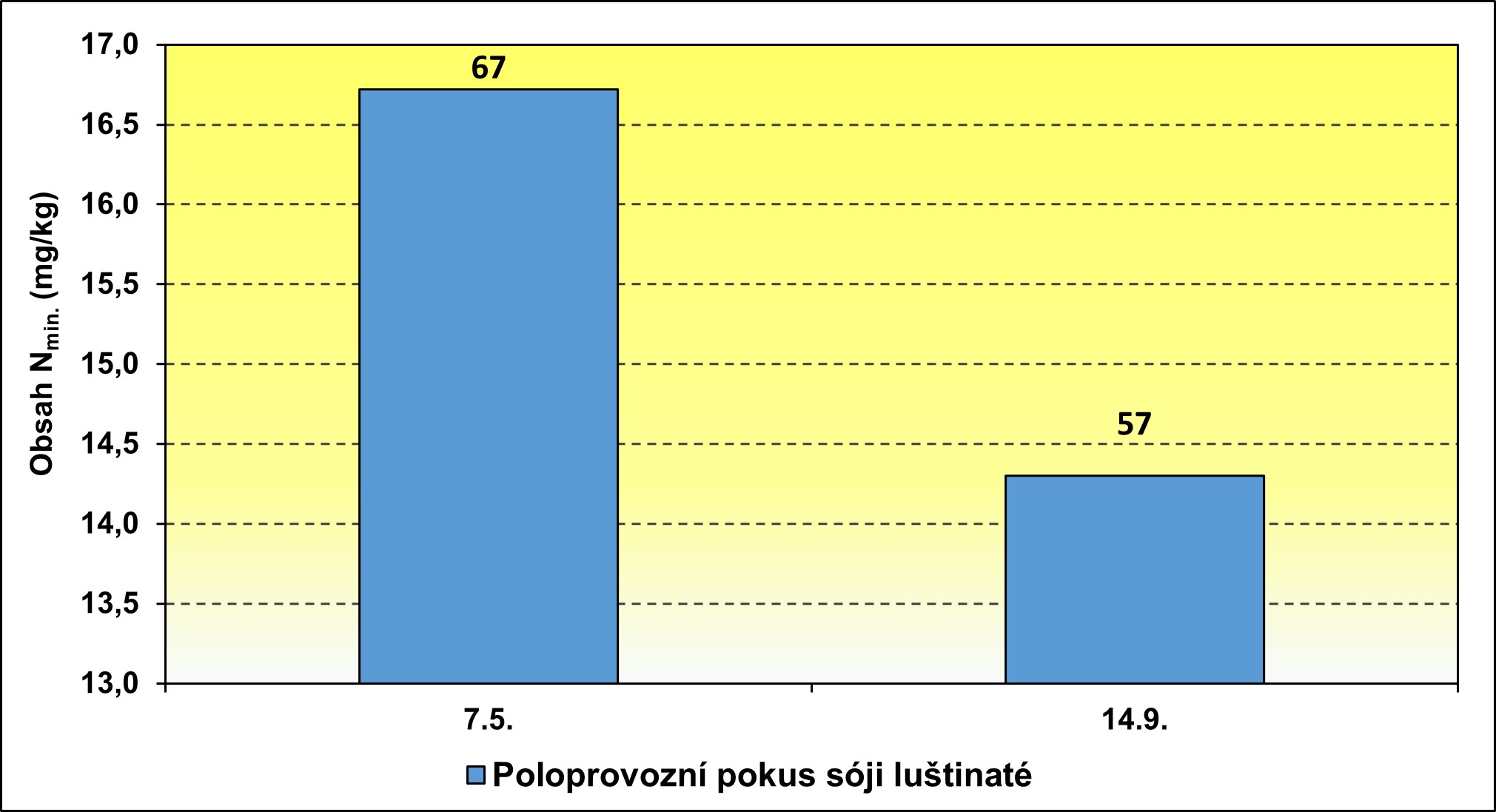
Fig. 1. Effect of pre-sowing soil treatment with Azorhiz +F bio- fertilizer on the residual mineral nitrogen (Nmin.) supply in the soil at harvest and soil supply for subsequent winter wheat (profile 0 – 30 cm)
Obsah NMin – NMin content in the soil
Poloprovozní pokus sóji – Semi-pilot experiment of soybean crop
2) The effect of Azorhiz and Azoter L bio-fertilizers on the vegetative growth and nutritional status of plants
After 54 days from sowing, the stands in the individual variants of soil and plant treatment showed the formation of the 4th – 8th leaf layers (height about 40 – 50 cm), growth and nutritional differences. Before sowing, the soil without Azorhiz treatment (control variant = 1) the dry mass of the above-ground biomass was 1.6 t/ha. 60 days after Azorhiz + F application (var. 2) to the soil before sowing, the above-ground biomass mass was by 14% higher than in the control variant. After extra-root application of Azoter L fertilizer (var. 3) during the growing season, the stand showed an almost 5% higher increase in above-ground biomass than the control variant, already on the 12th day after the treatment. After AZOTER L + Hydrogel (var. 4) application, the stand showed a 7% higher increase in above-ground biomass than the control variant after 12 days of treatment. After treating the soil before sowing with inoculant and other bacteria in Azorhiz +F fertilizer, the stand showed the best growth already in the first half of the growing stage.
After intensive growth and the main set of pods on the stems, control variant without soil and crop treatment detected an increase in above-ground biomass of 7.7 t/ha, 89 days after sowing. After treating the soil 7 days before sowing (95th day) with Azorhiz +F (var. 2), the second highest increase in above-ground biomass of plants was found. Biomass weight was significantly 68% higher than on the untreated control variant. 47 days after the stands were treated with Azoter L fertilizer during the growing season, a 9% greater weight of above-ground biomass was found compared to the control variant. After Azoter L application in a mixture with the hydrogel substance, the growth showed the highest increase in plant biomass, by 74% compared to the control variant.
The combined application of Azoter L with hydrogel substance to extend the leaf wetting and the penetration of the active ingredient of the fertilizer through the leaves cuticle, resulted in better growth of the above-ground biomass in the second half of the growing period season (Fig. 2).
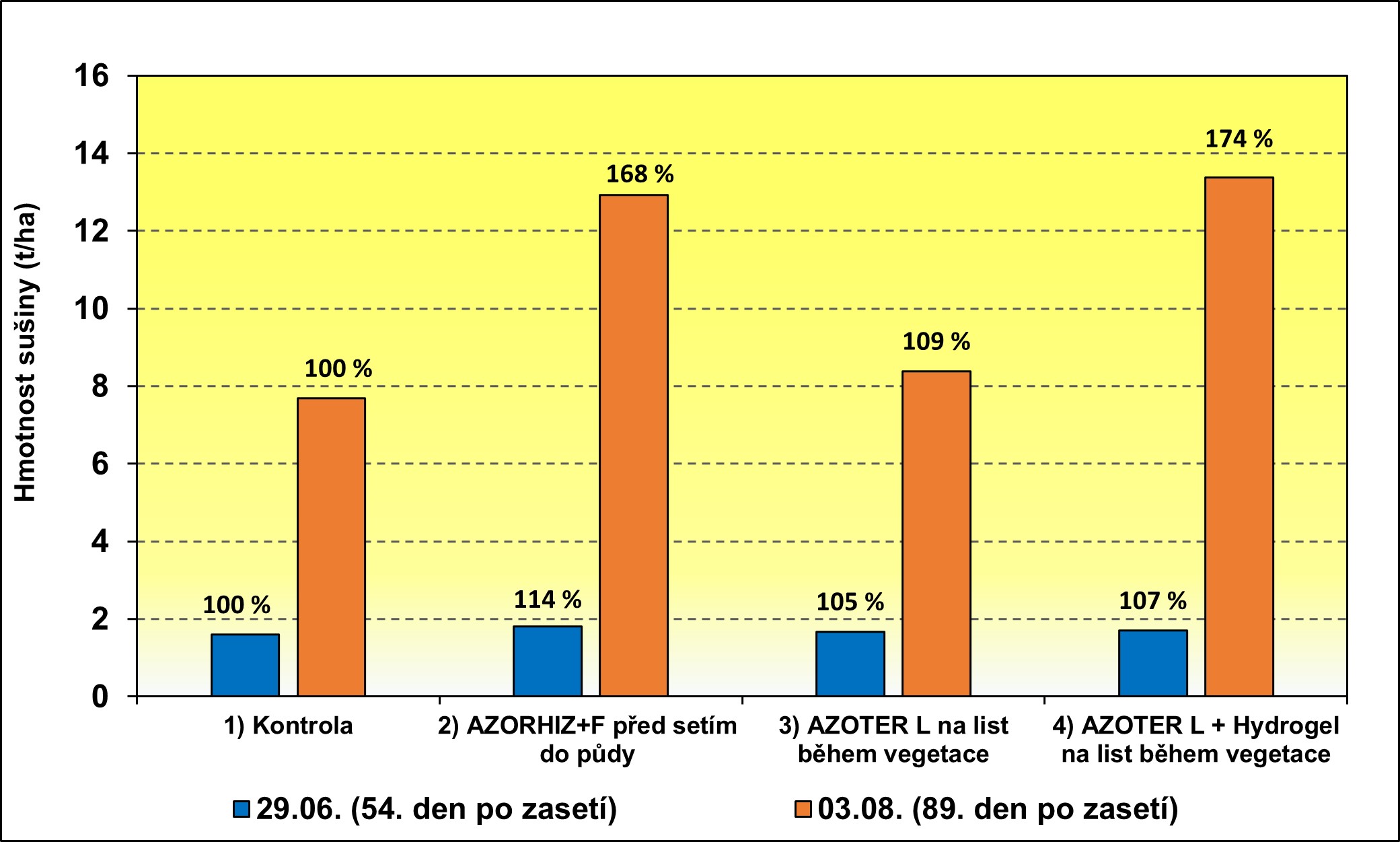
Fig 2. The effect of pre-sowing soil treatment with Azorhiz +F bio-fertilizer and the treatment of the stand with Azoter L fertilizer during the growing season
on the dynamics of the increase in the dry weight of the above-ground biomass (average stand density: 36 plants per m2)
Hmotnost sušiny (t/ha)- Dry weight (t/ha)
1) KONTROLA – Control variant
2) AZORHIZ + F před setím do pudy – AZORHIZ + F before sowing
3) AZOTER L na list během vegetace – AZOTER L on applied on leaf at the growing season
4) AZOTER L + Hydrogel na list během vegetace – AZOTER L + Hydrogel applied on the leaf at the growing season
29.6. 54. den po zasetí – 54th day after sowing
3.8. 89. den po zasetí – 89th day after sowing
On the 54th day of the vegetation period, plant nutrition with the main macro-elements (N, P, K, Ca and Mg) was minimally different in individual variants. On the untreated control plot, the average nutrition was classified to fulfill 90% of the optimum, i.e. slight deficiency of plant nutrition in the growth stage (4th – 8th leaf layer). After applying Azorhiz + F (var. 2) fertilizer and 60 days after the pre-sowing treatment of the soil, the macronutrients in plants fulfilled 101% of the optimum. The same happened after Azoter L application (var. 3). The nutrition reached 103% of optimum (in optimal level). After applying Azoter L fertilizer with hydrogel (var. 4) the nutrition fulfill 107% of optimum (slight excess). The nutrition of the stands after the extra-root application of Azoter L and Azoter L with hydrogel was very balanced. At the same time, the results show the effectiveness of pre-sowing soil treatment with Azorhiz +F for plant nutrition in the first half of the growing season. Also, the results show that the support for plant nutrition with standard seed inoculation with symbiotic, nitrogen-fixing bacteria has already started.
After reaching 89 days from sowing, observed macronutrients in plants on the control variant fulfilled 94% of the optimum (slight deficiency). After Azorhiz +F (var. 2) application, 95 days since the soil was treated, the highest value was found to fulfill 101% of the optimum (at optimum level). As in the first half of the growing season, plant nutrition was stably and significantly supported by soil treatment with Azorhiz +F fertilizer in the second half of the growing season. Plant nutrition on the 47th day after Azoter L application (var. 3) fulfilled the level of 91% optimum (slight deficiency). Plant nutrition after Azoter L and hydrogel (var. 4) fulfilled 93% optimum (slight deficiency). It is evident that the application of the foliar fertilizer improved plant nutrition minimally (Fig. 3)
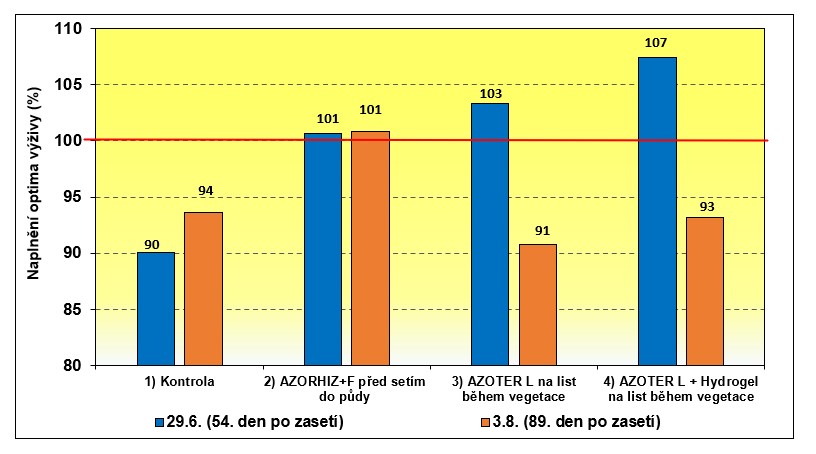
Fig 3. The effect of pre-sowing soil treatment with Azorhiz +F biofertilizer and the treatment of the stand with Azoter L fertilizer during the growing season on the nutritional status of the plants
during the growing season (total nutrition with N,P,K, Ca and Mg, fulfillment of the optimal nutritional status = 100%
Naplnění optima výživy (%) – fulfillment of the optimal nutritional status (%)
1) KONTROLA – Control variant
2) AZORHIZ + F před setím do pudy – AZORHIZ + F before sowing
3) AZOTER L na list během vegetace – AZOTER L on applied on leaf at the growing season
4) AZOTER L + Hydrogel na list během vegetace – AZOTER L + Hydrogel applied on the leaf at the growing season
29.6. 54. den po zasetí – 54th day after sowing
3.8. 89. den po zasetí – 89th day after sowing
Plant nutrition after 54 days from sowing was in a medium to moderate nitrogen deficiency, nutrition with phosphorus was in optimum fulfillment up to the excess level. Nutrition with potassium was in a deep deficiency. Nutrition with calcium was in medium deficit to excess level and the nutrition with magnesium was in excess level. Boron nutrition was in moderate to optimal deficiency, molybdenum nutrition was in extreme excess, manganese nutrition was in extreme deficiency, iron nutrition was in moderate to deep deficiency, and copper and zinc nutrition exceed the limit of content.
Plant nutrition with nitrogen was at the level of 83% optimum (moderate deficiency) in the control variant without treating the soil and the stand with the tested preparations. After the application of Azorhiz +F (var. 2), plant nutrition was found to be at the level of 95% optimum (slight deficiency up to optimum). Plant nutrition with nitrogen after Azoter L application during the growing season (var. 3) was at the level of 94% of the optimum (slight deficiency). Nitrogen nutrition of plants after Azoter L application with hydrogel during the growing season (var. 4) was at the level of 98% optimum (at optimum level).
Plant nutrition with phosphorus was in the range of 103 – 131% of the optimal fulfillment. After treating the soil with Azorhiz +F fertilizer or after treating the stand with Azoter L preparation, the nutrition was at the level of 117% of the optimum fulfillment (slight excess). After treatment of the stand with Azoter L fertilizer and hydrogel, the phosphorus nutrition of the plants was at the level of 131% of the optimum fulfillment (in excess).
The plant nutrition with potassium was very balanced between the variants of the stands in the range of 60-66% of optimum fulfillment or it was at the level of deep deficiency.
Plant nutrition with calcium was in the range of moderate deficit to optimum fulfillment of 86-111%. After Azorhiz + F soil treatment, plant nutrition was at the level of 101% optimum (at optimum level), after treatment with Azoter L fertilizer, the plant nutrition was at 108% optimum (slight excess) and after treatment with Azoter L fertilizer with hydrogel, the plant nutrition was at 111% optimum (slight excess to excess).
Plant nutrition with magnesium ranged from 117 to 132% of optimum fulfillment. Plant nutrition with magnesium after Azorhiz +F soil treatment was at the level of 123% of optimum fulfillment. After the treatment of the stand with Azoter L fertilizer during the growing season, including the variant with hydrogel, the plant nutrition was at the level of 132% of optimum fulfillment (in excess level).
Plant nutrition with boron was started to be improved by foliar application of Azoter L fertilizer, after which the plant nutrition reached 99% of the optimum fulfillment. After treatment of the stand with Azoter fertilizer with hydrogel, plant nutrition was improved to 104% optimum fulfillment (at optimum level). The pre-sowing soil treatment with Azorhiz +F caused a boron nutrition effect on plants which was at a level of 105% optimum fulfillment (at optimum level).
Plant nutrition with molybdenum was in a top excess and it indicated a very good function of tuber bacteria and nitrogen storage in plants. Plant nutrition with manganese was deeply deficient in all stands which required higher fertilization with extra-root nutrition. Plant nutrition with iron was moderately deficient in the control variant and after Azorhiz + F application. After the treatment with Azoter L, the plant nutrition was deeply deficient. Plant nutrition with copper was above optimum fulfillment and after the treatment with Azorhiz +F and Azoter L fertilizers, including hydrogel, the plant nutrition was in excess. Plant nutrition with zinc was above the optimum fulfillment in all stands. The best plant nutrition was in the control variant.
It is evident that the pre-sowing soil treatment with Azorhiz +F and the treatment of the stand during the growing season with Azoter L affected and improved plant nutrition before the intensive increase in biomass and the formation of pods mainly with nitrogen, phosphorus, calcium, and boron. (Fig. 4).
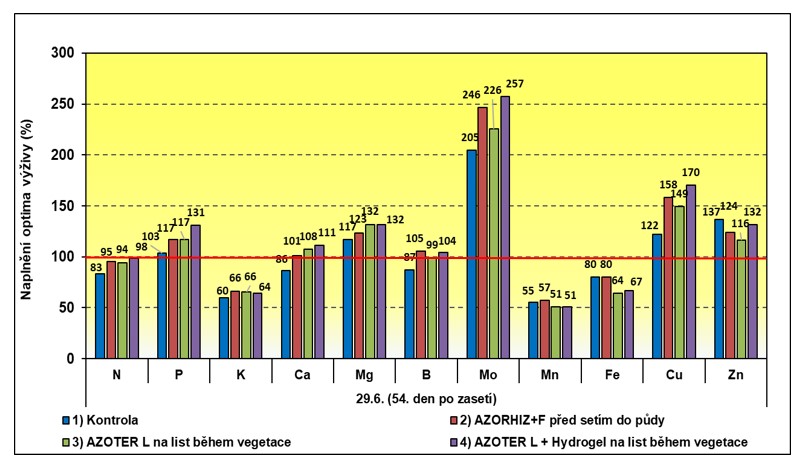
Fig. 4 The effect of pre-sowing soil treatment with Azorhiz + F biofertilizer and treatment of the stand with Azoter L fertilizer during the growing season on the nutritional status of plants on 29/06/2023,
the 54th day after sowing, BBCH 51 (fulfillment of the optimal nutritional status = 100%, after applying Azoter L fertilizer = 12th day, after applying Azorhiz + F = 60th day)
Plant nutrition with nitrogen at the end of intensive growth and the main set of pods after 89 days from sowing was at the optimum level, in the range of 89-105% to fulfill the optimum. Nutrition in the variants treated with Azoter L was slightly deficient in the range of 89-91% to fulfill the optimum. The best plant nutrition at the level of 105% optimum was found at the end of intensive growth after Azorhiz +F (var. 2) application. Plant nutrition in the control plot was at the level of 100% optimum.
Plant nutrition with phosphorus showed a medium to deep deficit with a range fulfillment of 74-84% in the individual variants. The worst phosphorus plant nutrition at the level of 74% of the optimum (deep deficiency) was found after Azoter L application during the growing season. After adding hydrogel substance to Azoter L fertilizer, phosphorus nutrition fulfilled 81% of the optimum (moderate deficiency). The best phosphorus plant nutrition at the level of 84% was found after the soil was treated with Azorhiz +F (var. 2) and in the control plot.
Plant nutrition with potassium varied between the stand variants within a range of 57–67% of optimal nutrition fulfillment (very low to low deficiency). On the control variant (var. 1), plant nutrition with potassium was at the level of 67% of the optimal fulfillment (in a low deficiency). The nutrition of plants with potassium was the same (62% of optimal fulfillment) after applying Azorhiz + F (var. 2). The worst plant nutrition with potassium at the level of 57% of the optimal fulfillment (very low deficiency) was found after applying Azoter L fertilizer (var. 3). Adding hydrogel substance to Azoter L fertilizer improved the plant nutrition to fulfill 64% of the optimum (low deficiency).
Plant nutrition with calcium varied mainly between variants in the range of 105-125%, i.e. in a slight excess to excess. Plant nutrition with calcium at the level of 125% of the optimal fulfillment was after treating the soil with Azorhiz + F fertilizer. Plant nutrition after treating the stands with Azoter L foliar fertilizer was at the level of 108% of the optimal fulfillment. Adding hydrogel substance, the plant nutrition was at the level of 118% of the optimal fulfillment.
The plant nutrition with magnesium, at the end of the formation of yield-generating elements, was between the stand variants mainly in the range of 112 – 128% (in a slight excess or excess). The best magnesium nutrition, at the level of 128% optimal fulfillment (excess), occurred only after Azorhiz + F application (var. 2). After Azoter L application, the plant nutrition with magnesium represented 126% of the optimal fulfillment (excess). Adding hydrogel substance, the plant nutrition was at the level of 112% optimal fulfillment (slight excess).
Plant nutrition with boron was detected on the monitored variants mainly in the range of 101 – 142% optimal fulfillment (optimum or excess). The best boron plant nutrition 142% optimal fulfillment (excess) was found after the pre-sowing soil treatment with Azorhiz +F. After Azoter L application during the growing season, plant nutrition was at the level of 110% optimal fulfillment. Adding the hydrogel substance, the plant nutrition was at the level of 112% optimal fulfillment. Molybdenum nutrition was in an extreme deficiency of 22-29% of the optimum in all plots. It indicated a very strong dilution in the plants compared to the first half of the growing period. Plants highly pre-supplied with molybdenum used the element for the formation of generative organs and concurrent biomass increases. Plant nutrition with manganese continued to be in a deep to extreme deficiency (46-79% of optimal fulfillment). Plant nutrition with iron was highly in excess (top intake) (Fig. 5).
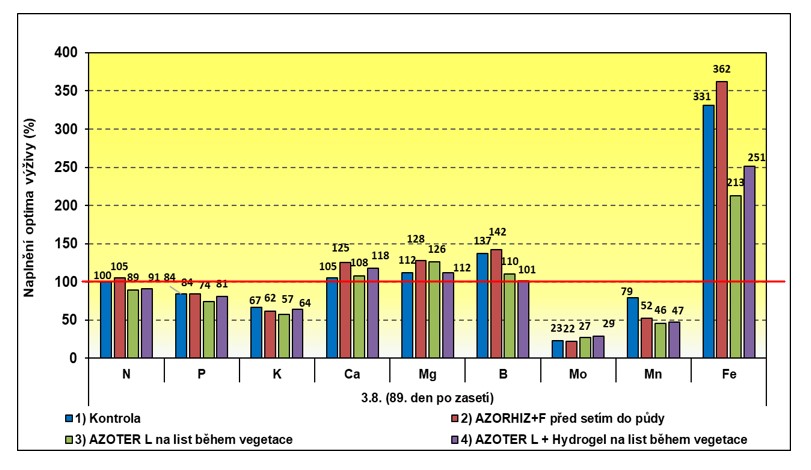
Fig. 5. Effect of pre-sowing soil treatment with Azorhiz + F biofertilizer and treatment of the stand with Azoter L fertilizer during growing season on the nutritional status of plants as to 03.08.2023, the 89th day after sowing,
BBCH 79-85 (fulfillment of the optimal nutritional status = 100%, after application of Azoter L fertilizer = 47th day, after application of Azorhiz +F fertilizer = 95th day)
1) Kontrola – Control
2) AZORHIZ + F před setím do pudy- AZORHIZ + F before sowing
3) AZOTER L na list během vegetace – AZOTER L fertilizer applied to the leaves during the growing season
4) AZOTER L + Hydrogel na list během vegetace – AZOTER L + hydrogel applied to the leaves during the growing season
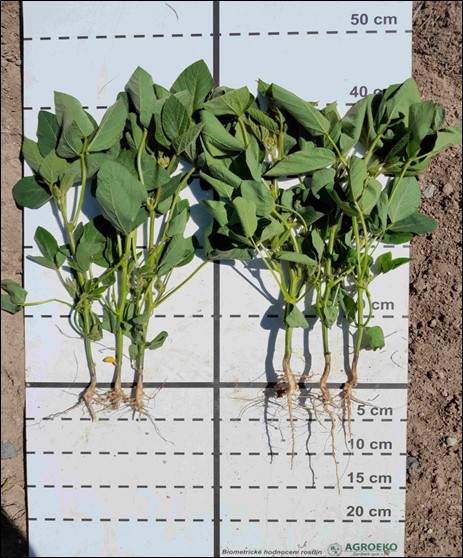
Plants of soybean stands, 54 days after sowing
Left: Control variant (var. 1)
Dry matter content of 1 plant=4,7 g
Right: Azorhiz + F soil treatment (var. 2)
Dry matter content of 1 plant = 5,0 g
The nutritional status of soybean throughout the growing season is recorded in Figures 2 to 5 and Tables 4 and 5. Specific Azoter L biofertilizer used for application during the growing season, which, in addition to the direct implementation of nutrients, subsequently strengthens the uptake of nitrogen by the leaf surface of the plants through Herbaspirillum seropedicae- the endophytic diazotrophic bacterium, was experimentally applied with available hydrogel, extending the wetting of the leaves and the adherence of the product to the plant surface. The plot where Azoter L + hydrogel was applied on the 13th day (29.06) showed an increased fertilizing effect of this preparation with nitrogen, phosphorus, calcium, magnesium, molybdenum, and copper. At this time, it was mainly about improving the plant nutrition with directly introduced nutrients. It showed that the soybean plants increased the growth in above-ground biomass, and the treatment with Azoter L fertilizer with hydrogel indicated a better (prolonged) penetration through the leaves cuticle for moistening and minimal drying (fertilizer salt deposits on the surface of the leaves, which can subsequently be washed away by rain). After applying Azoter L treatment, without or in a mixture with hydrogel, the growth rate and intensity of plant nutrition significantly improved already on the 13th day (tables 4 and 5).
Better nutritional status of plants with calcium and partially other elements after treatment with Azoter L fertilizer in a mixture with hydrogel was also detected at the end of the intensive growth.
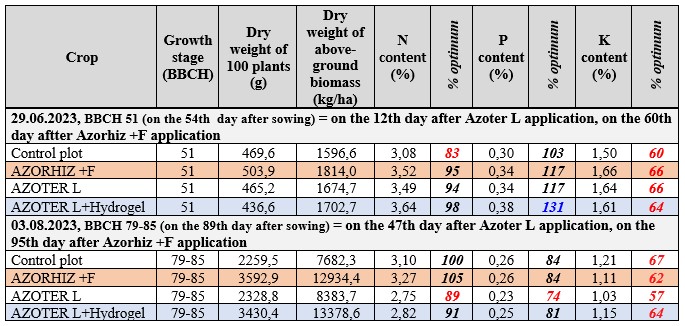
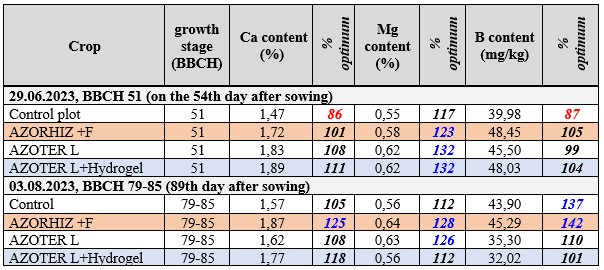
Tab. 4. The effect of the soybean stand treatment with the tested preparations on the vegetative and nutritional state of the plants with macro-elements and boron in the growth stage (diagnostics of plant nutrition)
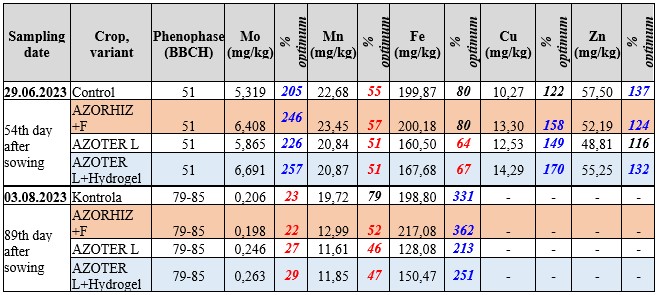
Tab. 5. The effect of the soybean stand treatment with tested preparations on the vegetative and nutritional state of plants with other purpose-built microelements in the growth stage (diagnostics of plant nutrition)
Red = significant deficiency (moderate and worse deficit),
Blue = significant excess (above optimum level)
3) Effect of Azorhiz and Azoter L biofertilizer on seed yield and quality
The stand without Azorhiz+F pre-sowing soil treatment and while maintaining the standard seed inoculation and application of the basic dose of nitrogen and phosphorus in fertilizers (var. 1 – control variant) before sowing showed a seed yield of 3.63 t/ha. After pre-sowing treatment of the soil before with Azorhiz +F and maintaining the standard seed inoculation (var. 2), a 15% (0.56 t/ha) higher seed yield was found compared to the control. A 12% (0.45 t/ha) increase in seed yield compared to the control variant was achieved after extra-root treatment of the stand (on the leaf) with Azoter L during the growing season (var. 3). After Azoter L application in a mixture with hydrogel (var. 4), a 28% (1.03 t/ha) higher seed yield was found compared to the control variant.
It is evident that individual Azoter L treatment of stands during the growing period showed the highest intensification ability in seed production, especially after tank-mixing the product with available hydrogel to extend the wetting and penetration time of the product through the leaves cuticle to reduce the risk of burning soybean leaves.At the same time, before sowing soil treatment with Azorhiz +F also brought an adequate benefit in the achieved seed yield.Soybean stands made sufficient use of the set of improving treatments for seed production.Even after treating the soil before sowing with Azorhiz +F fertilizer, a very good effective seed yield was achieved (Fig. 6).
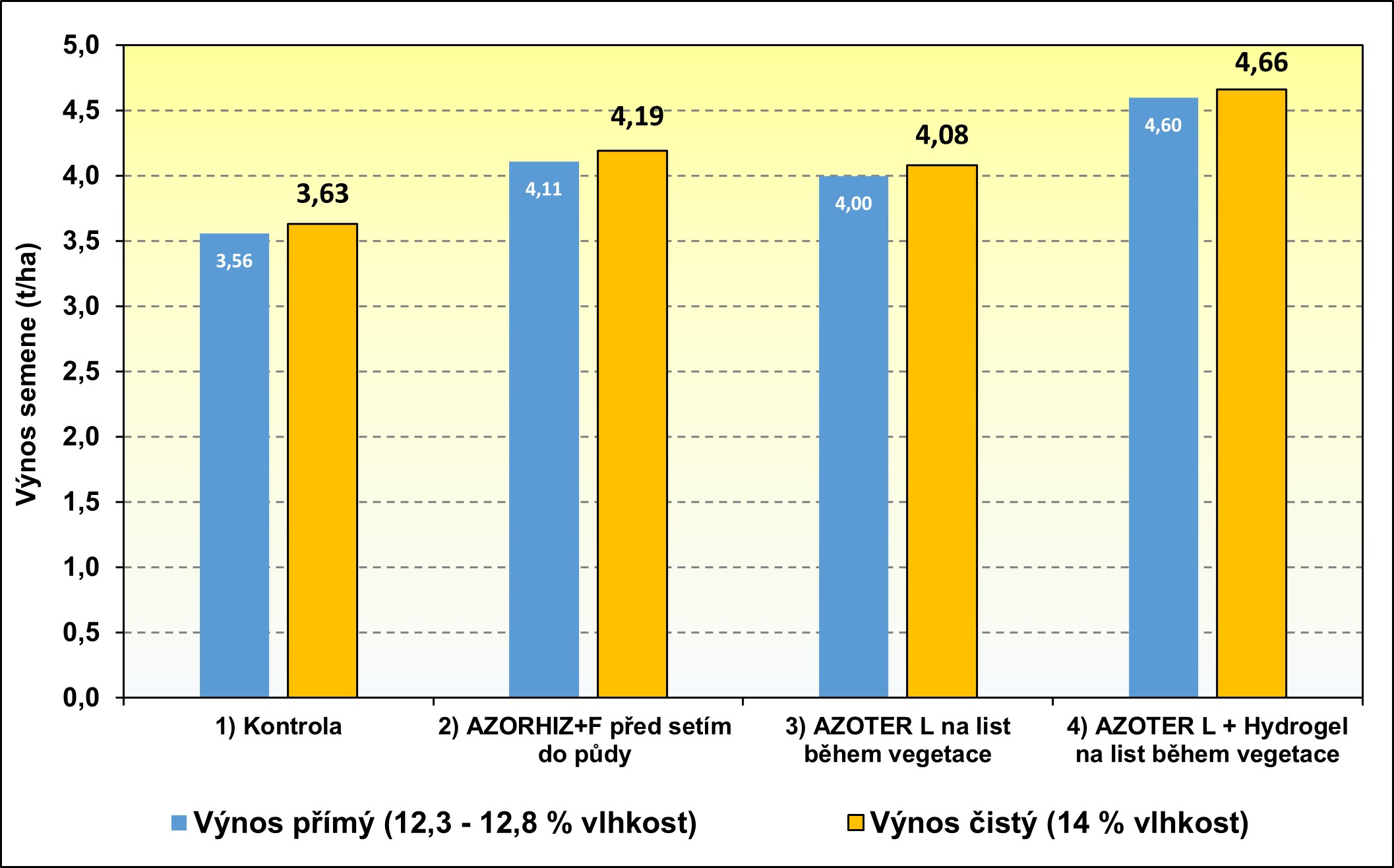
Fig. 6. Effect of pre-sowing soil treatment with Azorhiz + F biofertilizer and treatment of the stand with Azoter L fertilizer during the growing period on the achieved seed yield (harvested on 25.09.2023)
Výnos semene (t/ha) – seed yield (t/ha)
1) KONTROLA – Control variant
2) AZORHIZ + F před setím do pudy- AZORHIZ + F before sowing
3) AZOTER L na list během vegetace – AZOTER L applied on the leaf during the growing season
4) AZOTER L + Hydrogel na list během vegetace – AZOTER L with hydrogel applied on the leaf during the growing season
Výnos přijmý (vlhkost 12,3 – 12,8 % )- direct yield (moisture 12.3 – 12.8 %)
Výnos čistý (vlhkost 14 %) – net yield (moisture 14%)

An increase in seed yield was achieved after pre-sowing application with Azorhiz fertilizer, Azoter L fertilizer during the growing period and after Azoter L + hydrogel application through higher number of plants at harvest, partly by higher number of layers with developed pods or partly by the total number of seeded pods on plants and on layers and finally with the higher number of seeds on the plant.
On the control plot (var. 1), there was an average number of 52 plants on the area of 1 m2 at the harvest. After treating the soil with Azorhiz + F biofertilizer (var. 2), there was a higher density of stands, in the amount of 53 plants per m2. Similarly, a greater density of stands was found at harvest after applying Azoter L fertilizer (var. 3), in the range of an average 60 plants per m2. After treating the stand with Azoter L fertilizer with hydrogel, smaller number of plants was achieved – 50 plants per 1 m2.
The number of layers with developed or formed pods varied within all variants of the experiment in the range of 13.3 – 16.8 pieces per plant. The highest number of layers with developed pods was found after pre-sowing soil treatment with Azorhiz + F fertilizer (var. 2). After treating the stands with Azoter L fertilizer during the growing season (var. 3), the number of layers with developed pods was the lowest. The average number of pods per layer of stems was minimally different for individual trial variants and ranged from 1.71 to 1.92 pods per layer. The average number of pods on the whole plant ranged from 27.8 to 30.6 pcs. in all trial variants. The lowest number of pods on the plant was found after treatment with Azoter L fertilizer (var. 3). On the contrary, a higher number of pods on the plant occurred after Azoter L fertilizer with hydrogel (var. 4).
The average number of seeds in a pod was minimally different in individual variants and was in a very narrow range of 2.4 – 2.5 pcs. The lowest average number of seeds per pod was found in the control plot (var. 1). The average number of seeds on the whole plant ranged from 68 to 77 pcs. The lowest average number of seeds per whole plant was found after treatment with Azoter L fertilizer (var. 3). A higher number of seeds on plants was found after treating the soil with Azorhiz +F fertilizer (var. 2) and after treating the stand with Azoter L fertilizer enriched with hydrogel substance (var. 4).
The weight of one thousand seeds (WTS) varied within the individual stand variants in a narrow range of 180-186 g. The highest WTS = 186 g was found in the control plot with the lowest seed yield. Higher WTS = 184 g was found after pre-sowing soil treatment with Azorhiz +F (var. 2). After Azoter L application in a mixture with hydrogel substance during the growing season, WTS was found at the level of 181 g (var. 4). The lowest WTS = 180 g was found in the stand after treatment with Azoter L.
According to the content of the main component of nitrogenous substances, the quality of the soybean seed varied in a narrow range of 41.1 – 43.0% in dry matter within all variants of the experiment. The highest content of nitrogenous substances, 43.0%, was found in the control plot (var. 1). The second highest content of nitrogenous substances, 42.3%, was found after the soil treatment with Azorhiz +F (var. 2). A lower content of nitrogenous substances of 41.9% was found after applying Azoter L fertilizer. The lowest content of nitrogenous substances of 41.1% was found after applying Azoter L fertilizer in a mixture with an available hydrogel (var. 4).

Tab. 6. The effect of pre-sowing soil treatment with Azorhiz +F biofertilizer and treatment of the stand with Azoter L fertilizer during the growing season on the structure of yield-generating elements
and seed quality (achieved yield from the plot on 25.09.2023, yield elements determined from harvest plant samples from 14.9.2023)
After treating the soil with Azorhiz F fertilizer, or after foliar treatment with Azoter L fertilizer during the growing season the stands showed higher seed production and significantly higher straw yield. The yield ratio of seed and straw within all variants of the experiment varied in the range 1: 0.86 – 0.90. The lowest yield ratio of seed to the straw was found after treating the soil with Azoter L fertilizer + hydrogel (var. 4). Application of the fertilizer indicated to higher influence of seed yield over the straw yield as a by-product. The average ratio of seed and straw yield of 1 : 0.88 was found after applying Azoter L fertilizer on the leaf during the growing season (var. 3). The highest ratio of seed and straw yield of 1 : 0.90 was found on the stand after pre-sowing soil treatment with Azorhiz +F (var. 2). The stand was fertilized from the time of its emergence with a complex of supporting elements on the growth of biomass that was in a balance with the main and by-products. A close ratio of seed and straw yield of 1 : 0.89 was found on the stand on the control plot (var. 1).
The highest achieved seed yields from the harvested area (with a thresher) were related to the overall higher aboveground biomass production (higher straw yield). The highest straw yield with the potential for 6.2 t/ha was found after Azorhiz + F fertilizer before sowing (var. 2). Here, the second highest seed yield was also found from the harvested area with a thresher. The potential of the seed yield here was 6.9 t/ha. A higher straw yield potential of 5.9 t/ha was found after foliar treatment with Azoter L during the growing season (var. 3). The potential of the seed yield here was 6.7 t/ha. After applying Azoter L fertilizer in a mixture with hydrogel during the growing season, the potential of straw yield was 5.8 t/ha (var. 4). The seed yield here reached 6.7 t/ha. The seed yield achieved from the harvested area with the thresher was found to be the highest here.
The seed yield potential ranged from 6.4 to 6.9 t/ha in all test variants. The actual yield from the harvested area with a thresher, ranged from 3.6 to 4.7 t/ha (Fig. 7).
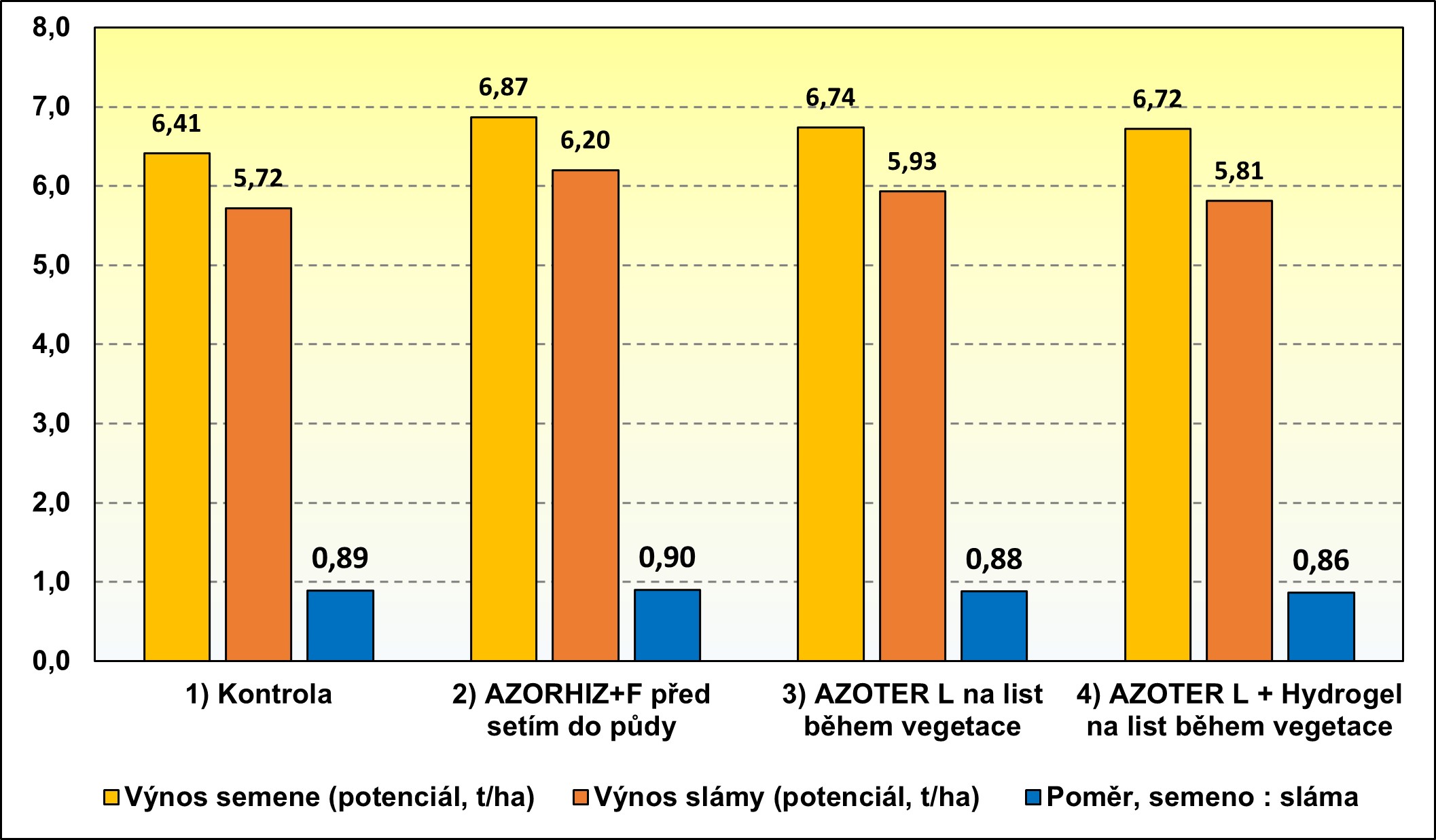
Fig. 7. Effect of pre-sowing soil treatment with Azorhiz + F biofertilizer and Azoter L treatment of the stand during the growing season on the yield ratio of the main soy product (seed)
and secondary soy product (straw) (harvest plant samples from 14.09.2023)
1) Kontrola – Control
2) AZORHIZ + F před setím do púdy – AZORHIZ + F pre-sowing application
3) AZOTER L na list během vegetace – AZOTER L application on the leaf during the growing season
4) AZOTER L + Hydrogel na list během vegetace – AZOTER L + Hydrogel application on the leaf during the growing season
Výnos semene (potenciál, t/ha) – Seed yield (potential, t/ha)
Výnos slámy (potenciál, t/ha) – Straw yield (potential, t/ha)
Poměr semeno : sláma – Seed/straw ratio

Conclusions
The cultivation process of the seemingly undemanding soybean crop can be purposefully intensified by complex biological principles of plant nutrition, providing the plants with a gradual supply of nitrogen and other nutrients. Treatment of the soil with bacteria living in symbiosis with the soybean root system and the targeted introduction of non-symbiotic diazotrophic bacteria into the soil that bind atmospheric nitrogen (N2), intensified the increase of above-ground biomass, improved plant nutrition during the growing period which resulted in a significant increase in seed yield. The achieved soybean seed yield increased by 0.56 t/ha after pre-sowing soil treatment with the concentrated Azorhiz +F biofertilizer at a dose of 10 l/ha (+0.1 l/ha of F additive).
A very effective intensification measure was the treatment of soybean stands during the growing season with the foliar (extra-root) Azoter L biofertilizer at a dose of 10 l/ha. After the treatment of the stand with Azoter L fertilizer, the seed yield increased by 0.45 t/ha. After applying Azoter L in a mixture with available hydrogel to support the penetration of the vital bacterial component of the product into the leaves, the seed yield increased by 1.03 t/ha compared to the untreated control variant. After the treatment, the stand showed better nutrition with nitrogen, phosphorus, calcium, magnesium, boron, molyddenum, and copper which supported a more intense dynamic of above-ground biomass growth.
Recommendations:
1) Azorhiz +F fertilizer for pre-sowing soil treatment of the soybeans must be immediately incorporated into the soil with pre-sowing preparation. When applying, it is advisable to maintain a safe working pressure range of up to 2.5 bar. The use of perforated nozzles is also advantageous. The product can effectively supplement or replace seed inoculation before sowing soybeans in structural, biologically active soils, soils with a slightly acidic or soil with neutral pH and in soils where growing a series of different types of crops in the same area occurred in the past, including this crop.
2) It is necessary to reduce the basic “starting” dose of nitrogen to 25 kg N/ha or phosphorus to 30 kg P205/ha in fertilizers after treating the soil with Azorhiz + F fertilizer before sowing the soybeans on well-supplied soils with phosphorus and mineral nitrogen (usually achieved after a mild winter in semi and arid regions).
3) It appears to be an economically very effective treatment of soybean stands during the beginning of growing season (developed on the main stem of the 3rd – 4th leaf layers) with an auxiliary biological source of nitrogen in the Azoter L fertilizer. The application of the fertilizer is very suitable in a mixture with hydrogel (at a dose of 1 kg (l)/ha) to reduce the risks of burning the leaves with the solution (stained soybean leaves have a minimal protective wax layer) and the extension of the leaves wetting is necessary to preserve the vitality of the active substance of the Herbaspirillum seropedicae. Deficient plant nutrition can be supplemented with boron or molybdenum in Azoter L fertilizer, to which the stands respond positively in terms of yield. Boron participates in the formation of buds, pollen and during flowering. Molybdenum participates in the metabolism of nitrogen obtained from fixation by nodule bacteria on plant roots.
Economic evaluation:
Special pre-sowing treatment of the soil with Azorhiz + F biofertilizer or specially performed treatment of the stands during the vegetation with Azoter L biofertilizer applied with a sprayer completely covered the additional costs incurred and, in addition, significantly increased the profitability of the soybean cultivation technology:
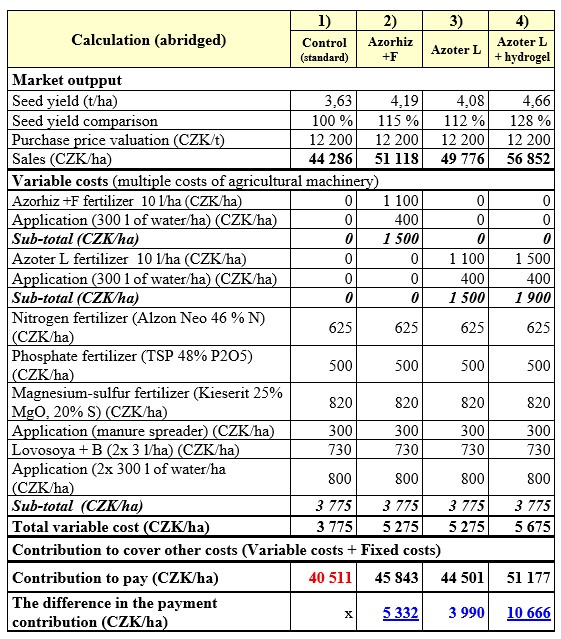
Note: The calculation includes the prices of fertilizers according to the price list valid in spring 2023, the price of work considers the increasement of inputs in 2023, price of auxiliary substance hydrogel 1 l = 400 CZK,
price of inoculation 570 CZK + 100 CZK for work at the mixing plant = 670 CZK/ha, price for sowing the seed 130 kg/ha. Valuation of soybean seed based on the realized purchase price of 2023.
Exchange rate EUR/CZK on 15/11/2023 = 24,506 CZK/EUR
The effect of biotic and microelement intensification of the soybean cultivation procedure showed relatively stable year-to-year results:
1) Pre-sowing soil treatment (at sowing) with Azorhiz +F fertilizer at a dose of 10 l/ha (+0.1 l/ha of component F) showed an increase in soybean seed yield in the range of 11-15% (0.29 – 0.56 t/ha) compared to untreated control soil.
2) Application of Azoter L fertilizer at a dose of 10 l/ha with hydrogel (main component – potassium polyacrylate) at a dose of 1 kg(l)/ha significantly improved soybean seed yield. In both years there was an increase by 28% (0.74 – 1 .03 t/ha) compared to the control.
3) The application of the separate Azoter L fertilizer at a dose of 10 l/ha had the effect of increasing the soybean seed yield in the range of 12-17% (0.44-0.45 t/ha) compared to the control:

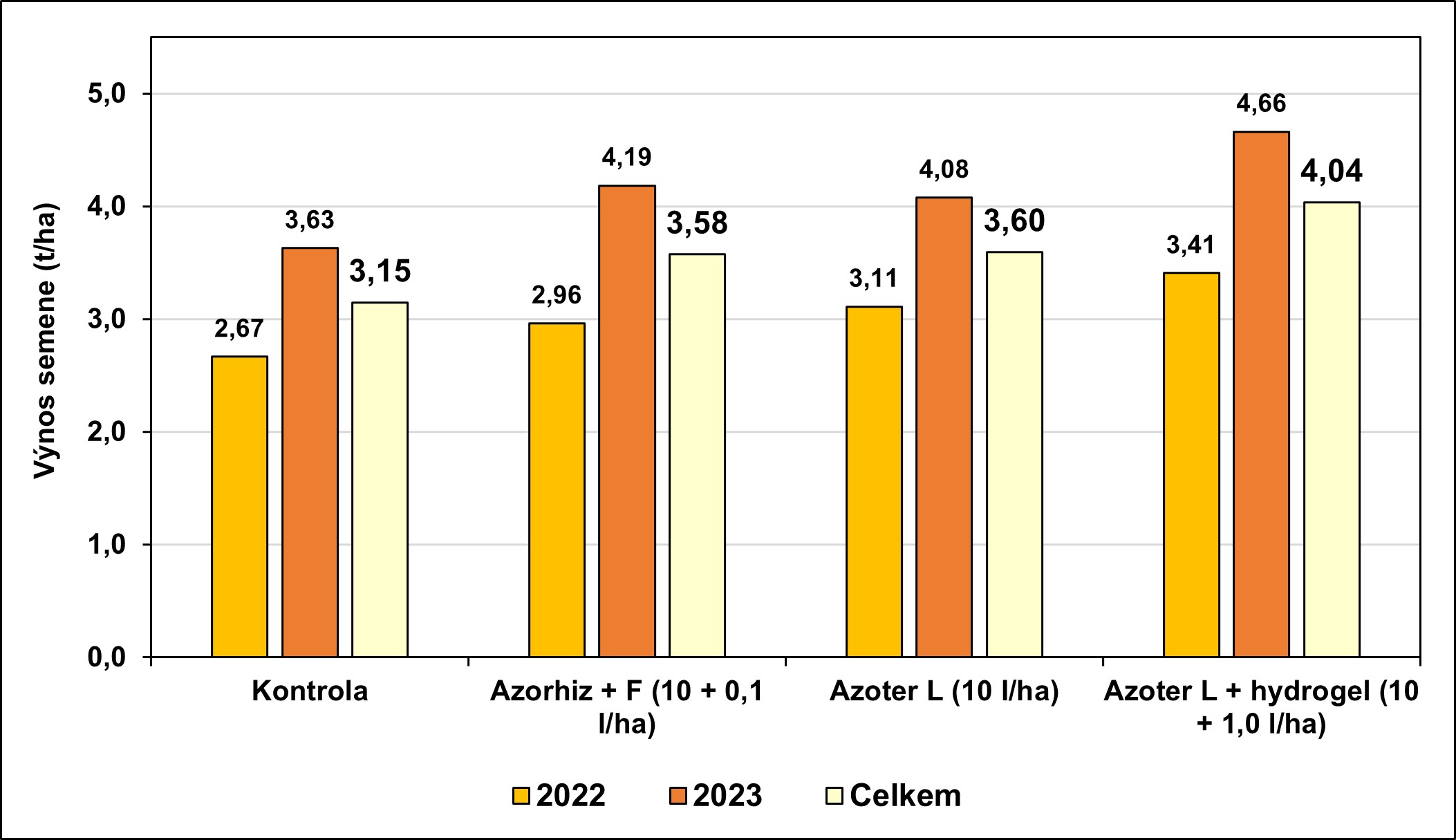
Výnos semene (t/ha) – seed yield (t/ha)
Celkem – total
Treatment of the soil before sowing soybeans with Azorhiz +F fertilizer or treatment of uprooted soybean stands in period of the 3rd – 5th leaf layer (half of June) with Azoter L fertilizer (with or without hydrogel) showed economically high efficiency of soybean cultivation in both years:
1) An increase in sales after applying Azorhiz +F fertilizer was achieved by 11-15%, namely in the calculation for the payment of the costs of the cultivation procedure. This made an increase in the payment for the contribution by 7.5-12%.
2) The increase in sales after Azoter L application was to 12-17%. This represented an increase in the contribution to cover the costs of the soybean cultivation process by 9-13%. With the admixture of the auxiliary water-holding substance hydrogel to Azoter fertilizer, despite a slight increase in the costs of treating the stand, an increase in the contribution to cover the other costs of the cultivation procedure by 23-24% was achieved.
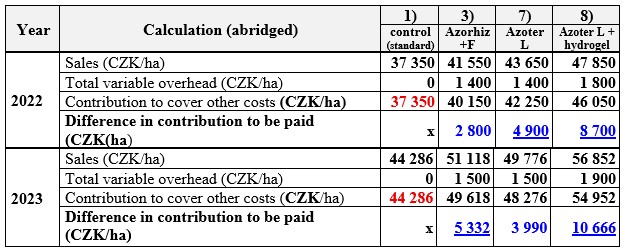
Exchange rate EUR/CZK on 15/11/2023 = 24,506 CZK/EUR
_______________________
The results of the tested Azorhiz +F and Azoter L biofertilizers were obtained in 2023, from the semi-pilot experiment in the implemented agricultural company, for AZOTER Trading s.r.o. The results of the experiment were provided to the representatives of the implementing company.
In Žamberk on 15. 11. 2023
Photo documentation
A) Soybean stand at the long-term growth on 29.6.2023 (4th – 8th leaf layer)

Soybean stand in the period after the treatment with Azoter L foliar fertilizer at the dose of 10 l/ha (on the 12th day after the treatment)
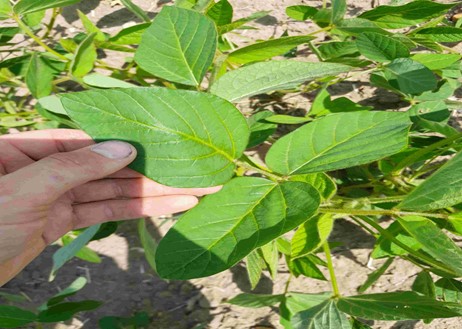
Plants on the 12th day after the treatment with Azoter L fertilizer and hydrogel (1 kg/ha)
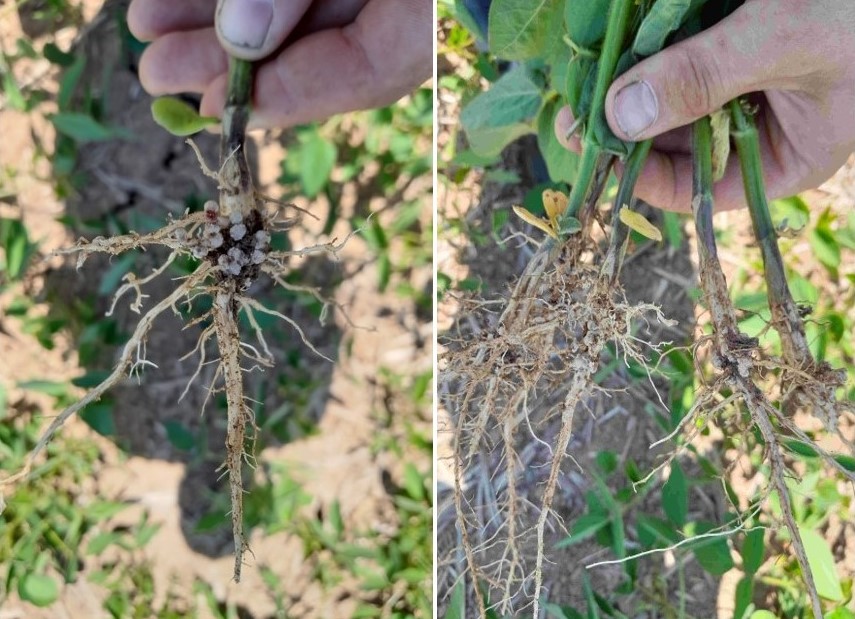
Nodulation of roots by nodule bacteria in plants, dated 29.06.2023
Azorhiz +F Azoter L + hydrogel
B) Soybean stands in the period of the last flush of flowers on 03.08. 2023 (8th – 11th leaf layer)
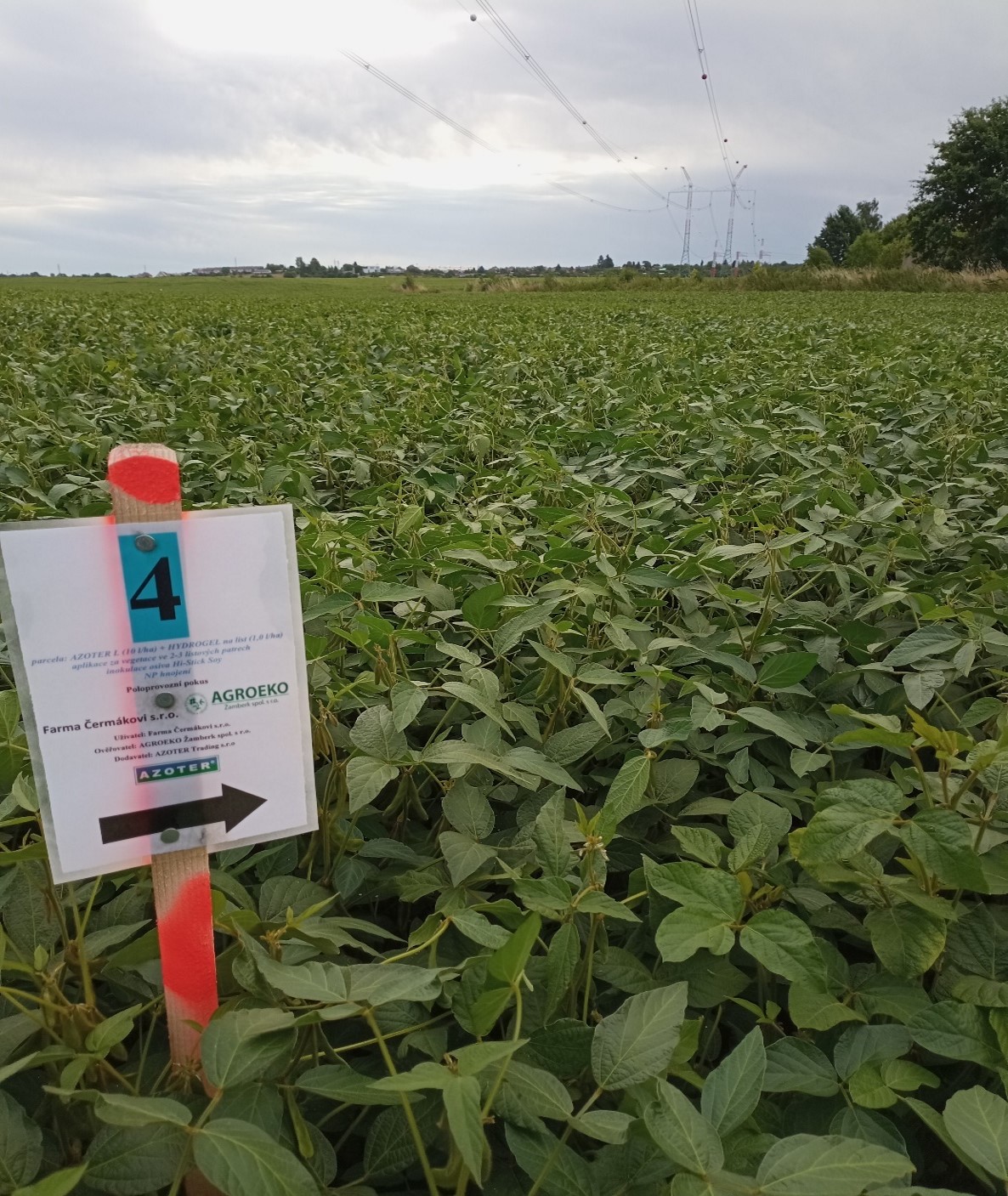
Soybean stand in the period of the last flush of flowers until the seed formation in pods (plot with Azoter L + Hydrogel application on leaf during growing season)
C) Soybean stand at the time of ripening on 14.09.2023
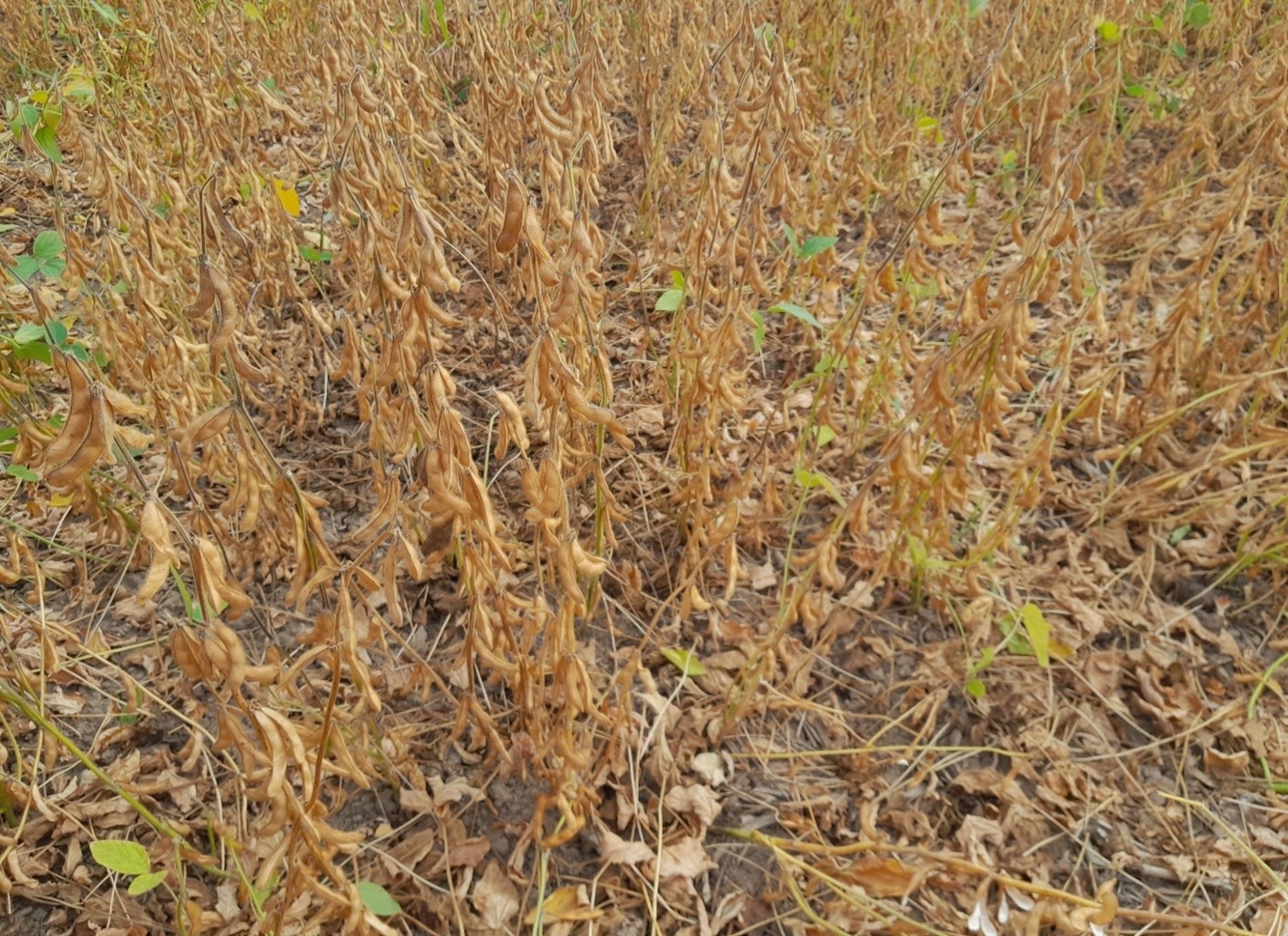
Soybean stand at the time of ripening on 14.09.2023
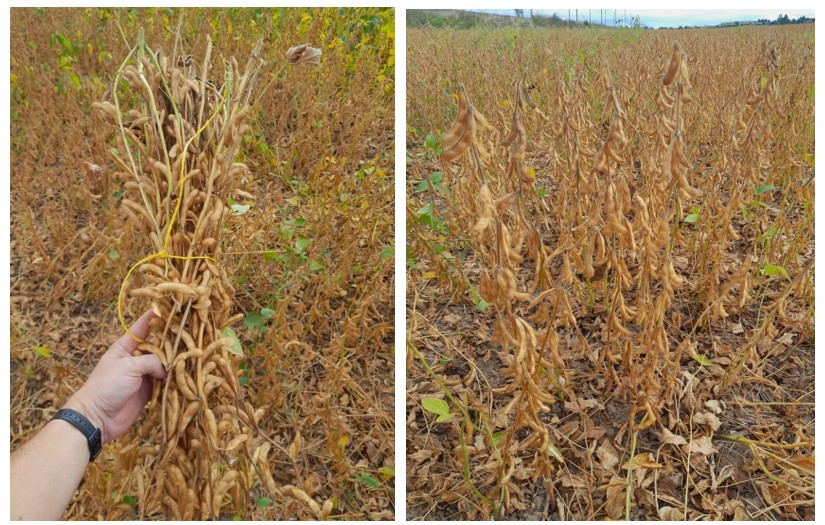
Soybean plants at the maturity stage (manual soybean harvest, plants from 0.25 m2)

